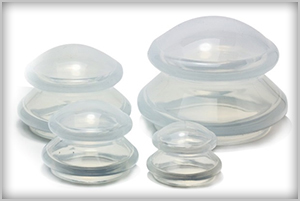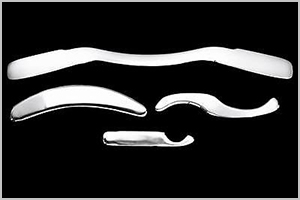Cupping Therapy / Gua sha
 Cupping Therapy
Cupping Therapy
Cupping therapy is an ancient form of alternative medicine in which a therapist puts special cups on your skin for up to 30 minutes maximum (usually 5-8 minutes) to create suction. People have cupping therapy for many purposes, including helping with pain, inflammation, blood flow, relaxation and well-being, and as a type of deep-tissue massage. Indications for Cupping Therapy Include (but are not limited to)
- Low back pain
- Neck stiffness
- Headaches
- Frozen Shoulder
- Myofascial connective tissue restrictions
- Myofascial trigger points
- Glass
- Bamboo
- Earthenware
- Silicone
- Plastic with Pump
- Dry (without oil)
- Wet (with oil)
- Flash cupping
- A more modern version of cupping uses a rubber pump instead of fire to create the vacuum inside the cup. Sometimes therapists use silicone cups, which they can move from place to place on your skin for a massage-like effect.
- Cupping is fairly safe, as long as it is performed by a trained health professional. But you could have these side effects in the area where the cups touch your skin:
- Mild discomfort
- Burns
- Bruises (these are not painful to touch and do not cause trauma to veins)
- Skin infection
- Animal horn
- Stone
- Wood
- Plastic
- Stainless Steel
- Low back pain
- Headaches
- Sciatica
- Stiff neck
- Frozen shoulder
The cups may be made of:
 Types
Types
There are different methods of cupping, including:
Side Effects
Plastic cupping tools with pump

Silicone cupping tools

 Gua sha
Gua sha
Gua sha is an ancient healing technique used by many clinicians of traditional Chinese medicine (TCM). In this procedure a lubricating medium, such as massage oil, is applied to the skin of the area to be treated. A smooth-edged instrument is used by the clinician to apply short or long strokes on the skin, typically in the area of pain or on the back parallel to the spine. This stroking motion creates raised redness (petechiae) or bruising (ecchymosis) which is not painful to touch.
While gua sha is most commonly used to treat pain, it can also be utilized to address conditions such as asthma, bronchitis, colds, flu, fever, heatstroke, fibromyalgia, strains, sprains, and muscle spasms. There are several theories that may explain why this ancient technique works: gua sha increases blood flow (microcirculation) in the soft tissue, potentially stimulates the body’s natural pain-relieving opioid systems, and it may block the pain response pathways so you feel pain relief.
In massage therapy gua sha can also be used to treat Myofascial connective tissue restrictions, myofascial trigger points, as well as stimulating peripheral nerves, increase local circulation and lymphatic flow
Gua sha tools can be made of:
Indications for the use of gua sha therapy include but are not limited to:
Stainless steel gua sha tools

